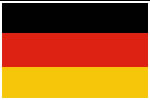
ISAS Leibniz-Institute for Analytical Sciences - ISAS - e. V.
KIS Kiepenheuer-Institut für Sonnenphysik,
LIKAT Leibniz Institute for
MFO Mathematisches Forschungsinstitut Oberwolfach. PDI Paul Drude Institute for
TIB German National Library of Science and Technology
Section E. Environmental Research. ATB Leibniz Institute for Agricultural Engineering Potsdam-Bornim. IFM-GEOMAR. Leibniz Institute of Marine Sciences,
Leibniz Association.
Phone: +49 (0)30 20 60***
Fax: +49 (0)30 20 60 49 ***
http://www.**ibniz-association. eu
The Leibniz factor:More topics. Shared knowledge. Better advice.
**Yearbook 2***
Foreword. Máire Geoghegan‐Quinn, European Commissionner for Research, Innovation and Sciencethe Leibniz Association: Safeguardingthe Future Through Research. Prof. Dr. Karl Ulrich Mayer, President ofthe Leibniz Association. A Global Network: International Researchinthe Leibniz Association. Anna‐Maria Manz. Gottfried Wilhelm Leibniz. Christian Walther. Leibnizin Figures. Torben Heinze.
Section a- Humanities and Educational Research. Section B - Economics, Social Sciences, Spatial Research. Section C - Life Sciences. Section D - Mathematics, Natural Sciences, Engineering. Section E - Environmental Research. 533+6.organisation. Senate. Executive Board. Contact. Index. Imprint. Map withthe Locations of all Leibniz Member Institutions and Associate Members.
Forewordin June 2010,
Atthe heart of this strategy isthe conviction that we need researchand innovation to build long‐term sustainable growth.
That is what Horizon 2020 -the new European programme for re‐search and innovation - is all about. It isthe EU’s response to this. need to investin our economy, and it will provide huge opportuni‐ties for researchers and innovators to collaborate across Europe and. beyond.
Horizon
pillar is aimed at boosting excellencein
• the second pillar aims to boost industrial leadership, with actions to make Europe amore attractive place for business to investin R&Dand innovation, including support forthe development of key ena‐bling technologies such as ICT, nanotechnologies and biotechnology.
•the third pillar is aimed at tackling societal challenges such as. health, food security, clean energy, green transport, climate change. as well as inclusive and secure societies.
Horizon 2020 will integrate research and innovation by providing. seamless and coherent funding from idea to market and it will sup‐port actions to boost knowledge transfer and cross‐border collabora‐tion to further develop and completethe European Research Area.
The Leibniz Association is actively addressing many of these issues.
forming excellent and innovative research that transfers knowledge to policy makers and business partners and that provides answers to societal challenges.
holder organizations that have avital role to playinthe realization ofthe European Research Area.
count on your support!. Máire Geoghegan‐Quinn,European Commissionner for Research,Innovation and Science.dear Readers,© European Commission4 5
by Karl Ulrich Mayer. © David Ausserhofer. Prof. Dr. Karl Ulrich Mayer,President ofthe Leibniz Association. Research Alliancesare open to collaboration with partners at Ger‐man universities as well as research groups abroad.
• Educational Potentials
• Biodiversity
• Healthy Aging
• Historical Authenticity
• Pharmaceutical Agent and Biotechnology
• Crisesin aGlobalised World
• Sustainable Food Production and Healthy Nutrition
• Nanosafety
• Science
sociation. Many Institutes offer services whichare recognised and. used internationallyin addition to promoting and pursuing innova‐tion and knowledge transfer. Infrastructuresare integratedin every. step ofthe research process. Theyare an indispensable prerequisite. for outstanding research.
Research increasingly relies on digital data. E‐science, information. technologies and information infrastructuresare gaining importance. across all research disciplines. Instead of amultitude of fragmented. efforts,the Leibniz Association isin aunique position to bundle theexpertise of its information infrastructures and research institutions(%"C. $. 9)("<+%;"*G$. +E)
>"the Research Museums. With its eight research museums and their internationally unparal‐leled collections,the Leibniz Association possesses aunique treasure.
The Leibniz research museumsarethe places where many people-fer research outcomes to society.
Dwindling food resources,the consequences of climatic change, thepreservation of biodiversity,the sustainable use of natural resources,the development of renewable energy sources, social integration and. economic growth,the consequences of population aging,the protec‐tion of our cultural heritage andthe strengthening of our democratic. order - theseare just some ofthe challenges which we face. The man‐date ofthe Leibniz‐Association is safeguardingthe future through. research.
The Leibniz Association is well‐organized to tackle this mandate.
The Association represents 86 research institutes encompassing. across all ofthe 16 federal states of Germany. As aresearch umbrella.organization, we have ashort history (founded after German reuni‐the whole spectrum from basic to applied science, provide important. research infrastructure andare heavily engagedin policy advice andthe transmission of science tothe larger public.
Achievement through Independence and Cooperation.
the major topical areas ofthe charters ofthe Association:
• Education and Cultural Heritage
• Economic Development, Social and Democratic Participation
• Health and Biodiversity
• Light, Materials and Models
• Natural Environment and Sustainable Development.
Across these subgroups,the Leibniz Association established trans‐disciplinary Leibniz Research Alliances (Leibniz‐Forschungsver‐research programs bridgingthe natural and life sciences onthe one. hand andthe social sciences and humanities onthe other. The Leibnizthe Leibniz Association:the Leibniz Association. Safeguardingthe Future. Through Research6 7the Leibniz Associationthe Leibniz Association. Leibnizin Europethe Leibniz Association considers itself aGerman science organi‐sationin Europe. It is part ofthe European Research Area and sub‐scribes tothe research and innovation program Horizon 2020, which. will bethe frame of reference for European research and funding pol‐icyinthe coming years. The Leibniz Association will take advantage. ofthe opportunities that arise from this new funding environment.
European research policy and funding. In doing so,the Leibniz Asso‐ciation also championsthe Humanities and Social Sciences to ensure. their appropriate sharein European funding programmes. The Leib‐niz Association is an active member of Science Europe and is repre‐sented by myself on its Governing Board.
Fostering Excellence and Relevance. Leibniz Institutesare committed to highest standards: international. logical relevance. An Institute´s relevance tothe practical problems. of society andthe world‐class quality of its researchare not only cri‐teria for acceptance intothe Leibniz Association; theyare also themajor benchmarks of regular evaluations. In awidely recognisedand standard‐setting procedure, all Leibniz Institutesare subject to review and evaluation by an external circle of experts at least once. every seven years.
Internationalisation. Internationalisingthe Leibniz Association is an integral part of ade‐velopment strategy that is rooted at each individual Institute. Inter‐nationalisation does not supplant regional and national networking,but rather complements it. Science has always been an international. enterprise, but is nowadays more and more organisedin global com‐munities such asthe Global Research Council. Leibniz conducts re‐search aroundthe globe and many of its Institutes already operate. subsidiaries abroad.
The Leibniz Association wants to recruitthe best international. minds for its Institutes and provide excellent conditions for their. work. This applies to junior researchers, executive staff, academic. personnel at Leibniz Institutes, as well as board and evaluation.committee members. The Association intends to increasethe op‐portunities for even more international contacts and international. Transfer of Knowledge and Technologyin accordance with its basic Leitmotiv of theoria cum praxi,the trans‐fer of knowledge from Leibniz Institutes to business, politics and so‐ciety is one ofthe major concerns ofthe Association. Forthe Leibniz. Association this translates to three objectives, whichare pursued at. each individual Leibniz Institute with different emphases:
• Leibniz Institutes transfer their insights to society
• Leibniz Institutesare partners for business and industry
• Leibniz Institutes provide research‐based political consultancy.
Close Cooperation with Universitiesin Teaching, Research and. Support of Junior Researchers. Universities and Leibniz Institutesare closely interconnected: they. jointly recruit academic leadership staff atthe 86 Leibniz institutions. labs, operated by universities and Leibniz Institutes, weave atight. web of collaboration. Leibniz researchers teach more than 6***
course hours at universities and universities of applied science. theexcellent equipment and infrastructure facilities atthe Institutes at‐employment contracts.
The trendsetting model ofthe ScienceCampus is an example of par‐ticularly intense regional collaboration between Leibniz Institutesand universities. They work together as partners on an equal foot‐spectives. Regional proximity, ajoint strategy and interdisciplinary. research approachesarethe strengths ofthe ScienceCampi. They. advance entire research areas, and strengthenthe local academic en‐international visibility of agiven regional research landscape. Five. such ScienceCampi have already been established: 9the Leibniz Association. experience,in boththe academic and administrative sectors. The In‐stitutes thus enhance their global visibility and their appeal as poten‐tial employers to international talent.
Equal Opportunities and Diversitythe commitment to equality of opportunity and diversity is acore ob‐jective ofthe Leibniz Association. We aim to recruitthe most brilliant. want to promote aculture of diversity and use it productively. Familyand career must be compatible for men and women alike, which is. ditions.
Currently, women account for almost aquarter ofthe entire staff inacademic leadership positions. The proportion of women, especially.
training centre, serving as an international platform for implement‐ing collaborative research projectsin tropical medicine, and involvedin training local professionals.
A Global Network:International Researchin theLeibniz Association. Science does not stop at borders - what was already true during. Leibniz’ lifetime applies even more to modern‐day Leibniz research‐ers. The institutionsinthe Leibniz Associationare globally intercon‐nectedin numerous ways. They collaborate with scientists and insti‐tutions abroad, send their own staff on research stays or visits, and. host international colleagues at their institutionsin Germany. Many. Institutes operate their own research facilities abroad.
U6LkJULL
info**[ta]**‐bonn.de
http://www.**e‐bonn.de
deutsches Schiffahrts‐museum
National Maritime. Museum (DSM)
Bremer‐havenSection aSectiona. 2***
Celler Straße 3
38114 Braunschweig, Germany
info**[ta]**.de
http://www.**i.de
Educational Research
Kartäusergasse
info**[ta]**.de
http://www.**m.de
att.culturali**[ta]**ccani.it
Christentum.EU**[ta]**il.com
jfnieus**[ta]**dp.ac.be
ieg4**[ta]**-mainz.de
http://www.**g-mainz.de
JKLK.ifz**[ta]**-muenchen.de
http://www.**z-muenchen.de
csec**[ta]**.uni-kiel.de
http://www.**n.uni-kiel.de
info**[ta]**-kmrc.de
http://www.**m-kmrc.de
info**[ta]**m.de
http://www.**zm.de
info**[ta]**d.de
http://www.**id.de
- 项目对接快讯
-
- 最新信息
- 热门信息


